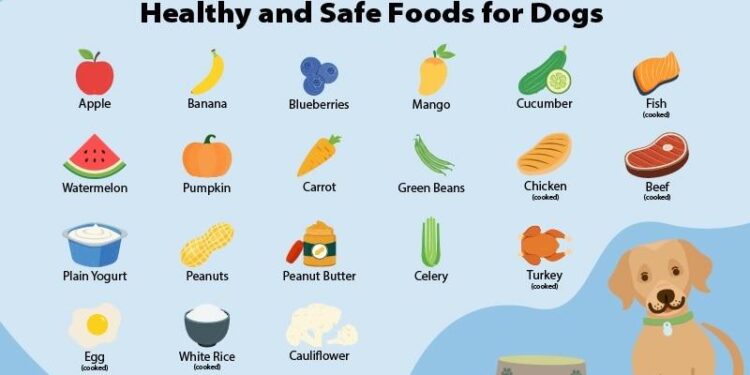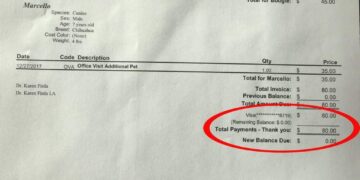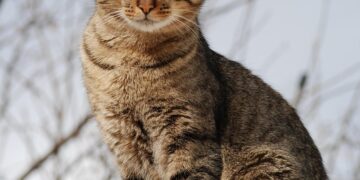Table of Contents
My name is Dr. Anya Sharma, and for the last 15 years, I’ve been a practicing veterinarian.
But before I ever put on the white coat, I was just a cat owner.
I want to tell you about my cat, Leo, because his story is the reason I’m writing this.
When I first adopted him, a scruffy but charming tabby, I walked into the pet superstore and stood paralyzed in Aisle 7.
The wall of cat food bags was a dizzying kaleidoscope of colors, claims, and prices.
Overwhelmed and on a tight budget, I did what seemed logical: I grabbed a large, well-known bag of dry food that was easy on the wallet.
It seemed like a sensible choice.
For a few months, everything was fine.
But then I started noticing subtle changes.
Leo’s once-sleek coat became dull and flaky.
He seemed less energetic.
The real crisis hit one weekend when I found him straining in his litter box, crying in pain.
An emergency vet visit—a deeply humbling experience for a young vet—diagnosed him with Feline Lower Urinary Tract Disease, or FLUTD.1
The “cheap” food I had been buying suddenly became astronomically expensive, buried under the cost of an emergency exam, urinalysis, medication, and a prescription diet.
That painful experience forced me to confront a hard truth: I had been thinking about cat food all wrong.
My focus on price had blinded me to the concept of value, and Leo had paid the price.
The Epiphany: Why “Food as Fuel” Is the Wrong Metaphor for Cats
In human nutrition, we often hear the phrase “food is fuel”.2
We’re told to think of our bodies as high-performance cars that need gasoline to R.N. This analogy, while simple, is dangerously incomplete, especially for our cats.
It reduces nutrition to a basic calculation of calories in, calories O.T. It suggests that as long as the “tank” is full, the type of fuel doesn’t matter much.
This is the very thinking that leads us down the path of choosing food based on the cost per pound rather than the quality of its contents.
My epiphany came from an entirely different field: functional medicine.
It was the idea that food is not fuel; food is information.2
Every single ingredient in your cat’s bowl is a set of instructions delivered to their body at a cellular level.
These messages tell their genes what to express, their hormones what to release, and their cells how to behave.2
Consider these messages:
- High-quality animal protein sends the signal: “Build and maintain lean muscle; support organ function.”
- Excess carbohydrates from cheap fillers like corn send the signal: “Spike blood sugar; store excess energy as fat”.4
- Omega-3 fatty acids from fish oil send the signal: “Reduce inflammation; support brain and skin health”.6
- Artificial colors and flavors send the signal: “This is an unnecessary foreign substance; mount a potential immune response”.7
This paradigm shift changes everything.
Our job as cat owners is not merely to be a gas station attendant, filling a tank.
Our job is to be the Chief Information Officer for our cat’s body, carefully curating the biological messages they receive every day.
Our goal is to find food that sends clear, correct, and high-quality information.
The good news is, you don’t need a PhD in nutrition to do this.
You just need to learn how to read the instruction manual that comes with every bag.
Learning the Language: How to Read the “Instruction Manual” on Every Bag
Every bag of cat food is a detailed report on the “information” it contains.
Once you know the language, you can decode it in minutes.
The AAFCO Statement: The “Certified to Work” Seal
The first thing to look for is the nutritional adequacy statement from the Association of American Feed Control Officials (AAFCO).
AAFCO is a voluntary organization that establishes nutritional standards for pet foods.8
If a bag says it is “formulated to meet the nutritional levels established by the AAFCO Cat Food Nutrient Profiles” or that “animal feeding tests using AAFCO procedures substantiate” its claims, it means the food is “complete and balanced” for a specific life stage (e.g., adult maintenance, growth).10
This statement is your non-negotiable starting point.
A food without it is not a complete meal.
However, it’s critical to understand that the AAFCO statement is a floor, not a ceiling.
It ensures the food contains the minimum required amounts of about 44 essential nutrients for cats, preventing basic deficiency diseases.12
It tells you
nothing about the quality or bioavailability of the ingredients used to meet those minimums.
A food can meet AAFCO standards using high-quality chicken meal or low-quality corn gluten meal.
Therefore, the AAFCO statement is a simple pass/fail test.
Once a food passes, our real investigation begins.
The Guaranteed Analysis: A Nutrient Fact-Sheet
The Guaranteed Analysis panel lists the minimum percentages of crude protein and fat, and the maximum percentages of fiber and moisture.
While useful, these “as-fed” values can be misleading when comparing foods with different moisture levels.
To get a true comparison, we must calculate the values on a Dry Matter Basis (DMB).
Here’s the simple formula:
- Find the moisture percentage on the bag (e.g., 10%).
- Calculate the dry matter: 100%−10%(moisture)=90%(dry matter).
- To find the DMB of a nutrient, divide its “as-fed” percentage by the dry matter percentage.
- Example: If crude protein is 32% as-fed: 32%÷90%=35.5% protein on a dry matter basis.
This calculation is the only way to accurately compare a dry food with 10% moisture to a canned food with 78% moisture.
The Ingredient List: The True Story
This is where we evaluate the quality of the “information.” Ingredients are listed in descending order by pre-cooking weight.13
The first five ingredients make up the bulk of the food and tell you almost everything you need to know.
A common point of confusion is the difference between “chicken” and “chicken meal.” “Chicken” as a first ingredient sounds great, but it contains about 75% water, which is cooked off during processing.14
“Chicken meal,” on the other hand, is rendered chicken with the water and fat removed, making it a much more concentrated source of protein.13
In a budget-friendly dry food, seeing a named meat meal (like chicken meal or turkey meal) high on the ingredient list is often a sign of higher quality.
To help you decode the most common terms, here is a quick-reference guide.
| Ingredient Term | What It Is (The Official Definition) | The “Information” It Sends |
| Chicken, Turkey, etc. | Clean flesh and skin, with or without bone, from parts of carcasses of slaughtered poultry.14 | Good Information: High-quality, bioavailable animal protein. |
| Chicken Meal, Turkey Meal | Rendered and ground tissue of poultry, without feathers, heads, feet, or entrails.13 | Excellent Information (especially in dry food): A concentrated source of high-quality animal protein. |
| Corn Gluten Meal | The dried residue from corn after the removal of the larger part of the starch and germ.15 | Confusing/Poor Information: A cheap, plant-based protein source that is less bioavailable for cats and a common allergen. |
| Chicken By-Product Meal | Ground, rendered, clean parts of the carcass of slaughtered chicken, such as necks, feet, undeveloped eggs, and intestines.12 | Vague Information: Can be a nutritious source of organ meats, but quality is variable and not transparent. A named meat meal is superior. |
| Powdered Cellulose | Purified, mechanically disintegrated cellulose from fibrous plant material. | Junk Mail: An insoluble fiber used as a filler to add bulk. Provides no nutritional value.6 |
| Fish Oil | Oil extracted from fish tissue. | Good Information: A direct source of anti-inflammatory Omega-3 fatty acids (EPA/DHA). |
| Taurine | An essential amino acid for cats. | Critical Information: Its addition is mandatory. A deficiency can cause severe heart and eye disease.16 |
| Artificial Colors (e.g., Red 40) | Synthetic dyes used to make food look more appealing to humans. | Junk Mail: Provides zero nutritional value, serves no purpose for the cat (who is colorblind to red), and can be a potential allergen.7 |
The Critical Messages Your Cat’s Body Needs to Receive
Using our “Food is Information” framework, let’s focus on the three most important messages your cat’s diet should send.
Message 1: “Build and Repair” – The Primacy of Animal Protein
Cats are obligate carnivores.
This isn’t a preference; it’s a biological mandate.
They must consume nutrients found only in animal tissue—like taurine, arachidonic acid, and true Vitamin A—to survive and thrive.14
Their bodies cannot create these essential compounds from plant ingredients the way dogs or humans can.18
The quality of a protein is determined by its
bioavailability—how easily a cat can digest and utilize its amino acids.
Animal proteins are highly bioavailable; plant proteins like corn gluten or soy are not.16
A long-term diet of low-quality protein can lead to a dull coat, poor skin health, and a weakened immune system.19
This is why the first few ingredients on the label are so critical.
Look for a named animal protein (e.g., “Chicken,” “Turkey”) or a named animal protein meal (e.g., “Chicken meal”) as the primary source of this vital information.
Message 2: “Energy Signals” & “Junk Mail” – The Truth About Carbohydrates
Here we arrive at the heart of the issue with most cheap dry foods.
Cats have no minimum dietary requirement for carbohydrates.4
Their natural prey—a mouse—is high in protein, moderate in fat, and contains less than 2% carbohydrates on a dry matter basis.4
So why are most dry foods packed with them? Two reasons: starches are required to bind the kibble together in the manufacturing process, and carbohydrate-rich ingredients like corn, wheat, and soy are far cheaper than animal proteins.15
A high-carbohydrate diet sends a flood of “junk mail” information to a cat’s body, which is optimized for a low-carb environment.
This mismatch is not benign; it is the root cause of many modern feline diseases.
The constant influx of carbs can lead to chronic blood sugar spikes and, over time, contribute to obesity and insulin resistance, the precursor to type 2 diabetes.4
Furthermore, as I learned with Leo, a diet consisting solely of low-moisture, high-carbohydrate kibble is a major risk factor for FLUTD.
It leads to chronically concentrated urine, which can irritate the bladder lining and increase the likelihood of painful and dangerous crystal formation.1
This reveals the predictable and costly chain reaction: the quest for cheap food leads manufacturers to use high-carb fillers, which sends the wrong biological information to the cat, increasing the risk of chronic diseases that are far more expensive than a better bag of food.
It is also crucial to see past marketing terms like “grain-free.” This label often just means that corn or wheat has been replaced with equally high-carbohydrate sources like potatoes, peas, or tapioca, which offer no biological advantage to a carnivore.24
The total carbohydrate percentage is what matters, not whether the source is a grain or a potato.
Message 3: “Operate and Communicate” – The Role of Fats and Fatty Acids
Fat is a vital, species-appropriate energy source for cats.
It’s also necessary for absorbing vitamins A, D, E, and K.
Just as with protein, the source matters.
Animal-derived fats like “chicken fat” are more biologically appropriate than many vegetable oils.24
The presence of a specific Omega-3 source, such as “fish oil,” is another piece of high-quality information, sending signals that help reduce inflammation throughout the body.6
The “Good Information, Good Price” Matrix: Analyzing Budget-Friendly Brands
Now, let’s put this framework into practice.
I’ve analyzed three widely available, budget-conscious dry cat foods that you’re likely to find at major retailers.
For each, I’ve examined the ingredients, calculated the estimated carbohydrate content on a Dry Matter Basis, and assessed the quality of the “information” it provides relative to its cost.
| Brand & Formula | First 5 Ingredients | Primary Protein(s) | Crude Protein % (DMB) | Est. Carb % (DMB) | Notable “Good Information” | Notable “Junk Mail” | Approx. Cost/lb | Verdict / Value Score |
| Iams ProActive Health Indoor Weight & Hairball Care (Chicken & Turkey) 6 | Chicken, Chicken By-Product Meal, Corn Grits, Corn Gluten Meal, Ground Whole Grain Corn | Chicken, Chicken By-Product Meal, Corn Gluten Meal | 33.3% | 34.1% | Chicken is #1 ingredient; L-carnitine for metabolism. | Heavy reliance on corn; uses by-product meal instead of a named meal; contains artificial color. | ~$2.13 (16-lb bag) 26 | Acceptable, but High in Carbs: The information is mixed. While it starts with real chicken, the heavy use of corn as the next major ingredient sends a poor metabolic signal. A functional budget choice, but not ideal. |
| Purina ONE True Instinct High Protein (Chicken) 27 | Chicken, Chicken Meal, Pea Starch, Cassava Root Flour, Soybean Meal | Chicken, Chicken Meal, Soybean Meal | 38.9% | 27.8% | High protein with two animal sources in the top 2; no artificial colors/flavors; lower carbs than many budget options. | Uses plant-based pea/soy protein boosters; not the lowest carb option available. | ~$2.64 (14.4-lb bag) 27 | Good Budget Option: Sends a strong protein message with chicken and chicken meal leading the way. While it uses some plant proteins, its lower carbohydrate load and lack of “junk mail” like artificial colors make it a solid choice in this price range. |
| Kirkland Signature Maintenance Cat (Chicken & Rice) 28 | Chicken, Chicken Meal, Whole Grain Brown Rice, Ground White Rice, Chicken Fat | Chicken, Chicken Meal | 33.3% | 34.4% | Two high-quality animal proteins are #1 and #2; uses species-appropriate chicken fat; contains probiotics for gut health. | High carbohydrate content from rice; fat content (20%) may be too high for sedentary indoor cats. | ~$1.48 (25-lb bag) 29 | Excellent Value: Delivers very high-quality “information” for its price point. The top two ingredients are excellent. While the carbohydrate level is higher than ideal, the quality of the core protein and fat ingredients makes this arguably the best value on the market if your cat tolerates grains. |
Conclusion: You Are Your Cat’s Chief Information Officer
The journey with Leo taught me that the most expensive cat food is the one that makes your cat sick.
The goal isn’t to find the absolute cheapest bag on the shelf, but to find the best nutritional value—the highest quality “information”—that your budget can afford.
After Leo’s emergency, I switched him to a food much like the Kirkland Signature formula—one with named animal proteins and fat as the primary ingredients.
The change was remarkable.
Within a few months, his coat became glossy and soft again, his energy returned, and most importantly, he has been free of urinary issues ever since.
His success story is a testament to the power of providing the right biological information.
You now possess the framework to walk down that overwhelming pet food aisle with confidence.
You can ignore the flashy marketing and focus on what matters.
Pick up a bag, check for the AAFCO statement, and then read the true story told by the first five ingredients.
You have the tools to analyze the messages being sent and to choose the food that provides the clearest, most species-appropriate instructions for a long and healthy life.
You don’t need to spend a fortune to be a great cat owner.
You just need to be a savvy consumer of information.
You are your cat’s advocate, their guardian, and now, their Chief Information Officer.
Works cited
- 5 Common Cat Illnesses that are Impacted by Nutrition – PetMD, accessed August 12, 2025, https://www.petmd.com/cat/centers/nutrition/cat-diarrhea-and-other-diseases-impacted-by-nutrition
- Food is fuel? Or is there a better food analogy? – Precision Nutrition, accessed August 12, 2025, https://www.precisionnutrition.com/food-is-not-fuel
- Healthy Living: Metaphors We Eat By? – Present Tense, accessed August 12, 2025, https://www.presenttensejournal.org/wp-content/uploads/2012/10/Spoel.pdf
- Cats and Carbohydrates – What is the Impact? – WSAVA2011 – VIN, accessed August 12, 2025, https://www.vin.com/apputil/content/defaultadv1.aspx?id=5189562&pid=11343
- Cats and Carbohydrates: The Carnivore Fantasy? – PMC, accessed August 12, 2025, https://pmc.ncbi.nlm.nih.gov/articles/PMC5753635/
- Iams ProActive Health Adult Indoor Weight Control and Hairball Care Chicken and Turkey Recipe Dry Cat Food, 7 lb. Bag – Tractor Supply, accessed August 12, 2025, https://www.tractorsupply.com/tsc/product/iams-proactive-health-indoor-weight-and-hairball-care-dry-cat-food-7-lb-bag
- 9 Ingredients to Avoid in Cat Food & What to Look for Instead – Natural Pet Food – RAWZ, accessed August 12, 2025, https://rawznaturalpetfood.com/cat-food-ingredients-to-avoid/
- AAFCO-Approved Pet Food: Everything You Need to Know | PetMD, accessed August 12, 2025, https://www.petmd.com/dog/nutrition/What-Is-AAFCO-and-What-Does-It-Do
- AAFCO and Its Influence On Pet Food Labels – IAMS, accessed August 12, 2025, https://www.iams.com/cat/cat-articles/aafco-statements-explained
- www.petmd.com, accessed August 12, 2025, https://www.petmd.com/dog/nutrition/What-Is-AAFCO-and-What-Does-It-Do#:~:text=The%20AAFCO%20statement%20found%20on,for%20a%20particular%20life%20stage.
- Cracking the Code: Understanding the Requirements for AAFCO Approved Cat Food, accessed August 12, 2025, https://www.ask.com/culture/cracking-code-understanding-requirements-aafco-approved-cat-food
- FAQs – Frequently Asked Questions – AAFCO, accessed August 12, 2025, https://www.aafco.org/consumers/understanding-pet-food/frequently-asked-questions/
- Demystifying Pet Food Fillers – Val Talks Pets, accessed August 12, 2025, https://valtalkspets.com/2022/01/21/demystifying-pet-food-fillers/
- Feeding Your Cat | Cornell University College of Veterinary Medicine, accessed August 12, 2025, https://www.vet.cornell.edu/departments-centers-and-institutes/cornell-feline-health-center/health-information/feline-health-topics/feeding-your-cat
- Choosing Cat Food Without Fillers: What You Need to Know – Talis Us, accessed August 12, 2025, https://talis-us.com/pt/blogs/news/choosing-cat-food-without-fillers-what-you-need-to-know
- The Impact of Nutrition on Pet Health: Insights from Veterinary Science – Summit Animal Hospital, accessed August 12, 2025, https://www.summitanimalhospitalil.com/the-impact-of-nutrition-on-pet-health-insights-from-veterinary-science.html
- Nutrition – General Feeding Guidelines for Cats – VCA Animal Hospitals, accessed August 12, 2025, https://vcahospitals.com/know-your-pet/nutrition-feeding-guidelines-for-cats
- Nutritional Requirements of Small Animals – Merck Veterinary Manual, accessed August 12, 2025, https://www.merckvetmanual.com/management-and-nutrition/nutrition-small-animals/nutritional-requirements-of-small-animals
- Nutrition, Skin, and Cats | VCA Animal Hospitals, accessed August 12, 2025, https://vcahospitals.com/know-your-pet/nutrition-skin-and-cats
- Learn the truth about carbs and cats – Veterinary Practice News, accessed August 12, 2025, https://www.veterinarypracticenews.com/learn-the-truth-about-carbs-and-cats/
- Cats and Carbohydrates: – AWS, accessed August 12, 2025, https://vetfolio-vetstreet.s3.amazonaws.com/mmah/28/d836e765404eb38e43d098d3941799/filePV0110_laflamme.pdf
- Understanding FLUTD in Cats: Causes, Management, and Prevention – Guides, accessed August 12, 2025, https://www.bigdogpetfoods.com/guides/understanding-flutd-in-cats-causes-management-and-prevention
- The effect of diet on lower urinary tract diseases in cats – PubMed, accessed August 12, 2025, https://pubmed.ncbi.nlm.nih.gov/9868257/
- Unbiased Kirkland Cat Food Review – Cats.com, accessed August 12, 2025, https://cats.com/kirkland-cat-food-review
- Nutrition 101 for You and Your Cat – Pecan Grove Veterinary Hospital, accessed August 12, 2025, https://pecangrovevet.com/nutrition-101-for-you-and-your-cat/
- IAMS Proactive Health Indoor Weight & Hairball Care Chicken & Turkey Recipe Dry Cat Food, 16-lb bag – Chewy.com, accessed August 12, 2025, https://www.chewy.com/iams-proactive-health-indoor-weight/dp/29294
- Purina ONE True Instinct, High ProteinDry Cat Food, Chicken, 14.4 lb Bag – Walmart.com, accessed August 12, 2025, https://www.walmart.com/ip/Purina-ONE-True-Instinct-High-ProteinDry-Cat-Food-Chicken-14-4-lb-Bag/399026960
- Kirkland Signature Chicken and Rice Cat Food 25 lbs. – Costco Wholesale, accessed August 12, 2025, https://www.costco.com/kirkland-signature-chicken-and-rice-cat-food-25-lbs..product.100334973.html
- Kirkland Signature Super Premium Maintenance Cat Food, Chicken & Rice, 25 Pound, accessed August 12, 2025, https://boxed.com/product/1893/kirkland-signature-super-premium-maintenance-cat-food-chicken-






